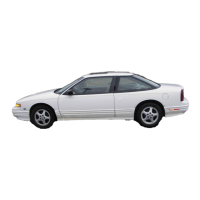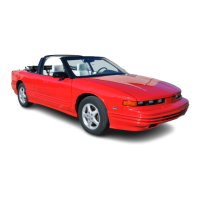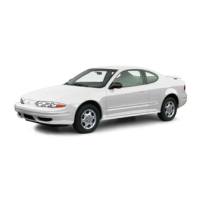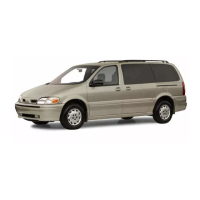Overinflated tires are more likely to be
cut, punctured or broken by
a
sudden
impact
--
such as when you hit a pothole.
Keep tires at the recommended pressure.
Worn, old tires can cause accidents.
If
your
tread
is
badly worn, or
if
your tires have
been damaged, replace them.
Inflation
--
Tire Pressure
The Tire-Loading Information label, which is on the
inside of the trunk lid
shows
the correct inflation
pressures for your tires when they’re cold. “Cold”
means your vehicle has been sitting for at least
three
hours or driven no more than
1
mile
(1.6
km).
NOTICE:
Don’t let anyone tell you that underinflation or
overinflation
is
all right.
It’s
not.
If
your tires
don’t have enough air (underinflation), you can
get the following:
Too
much flexing
Too much heat
Tire overloading
Bad wear
Bad handling
Bad fuel economy.
If
your tires have too much air (overinflation),
you can get the following:
Unusual wear
Bad handling
Rough ride
Needless damage from road hazards.
6-43

